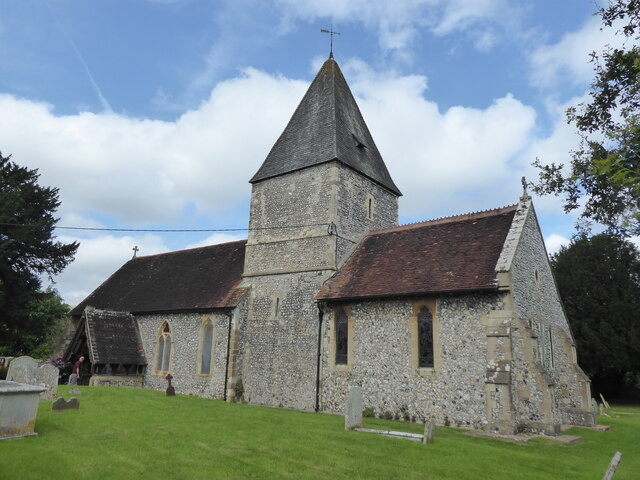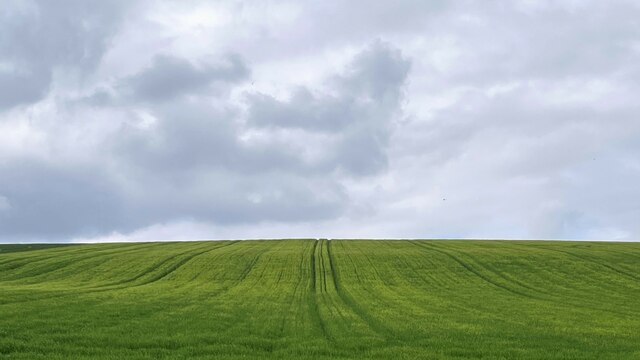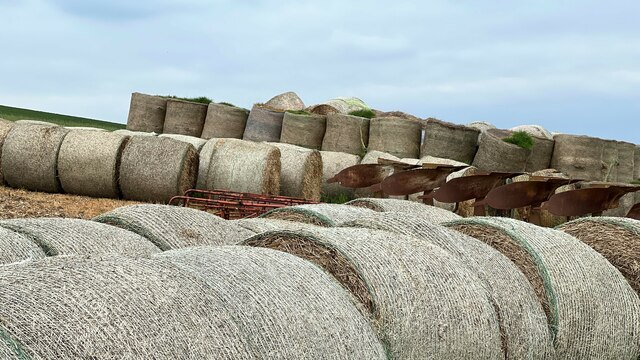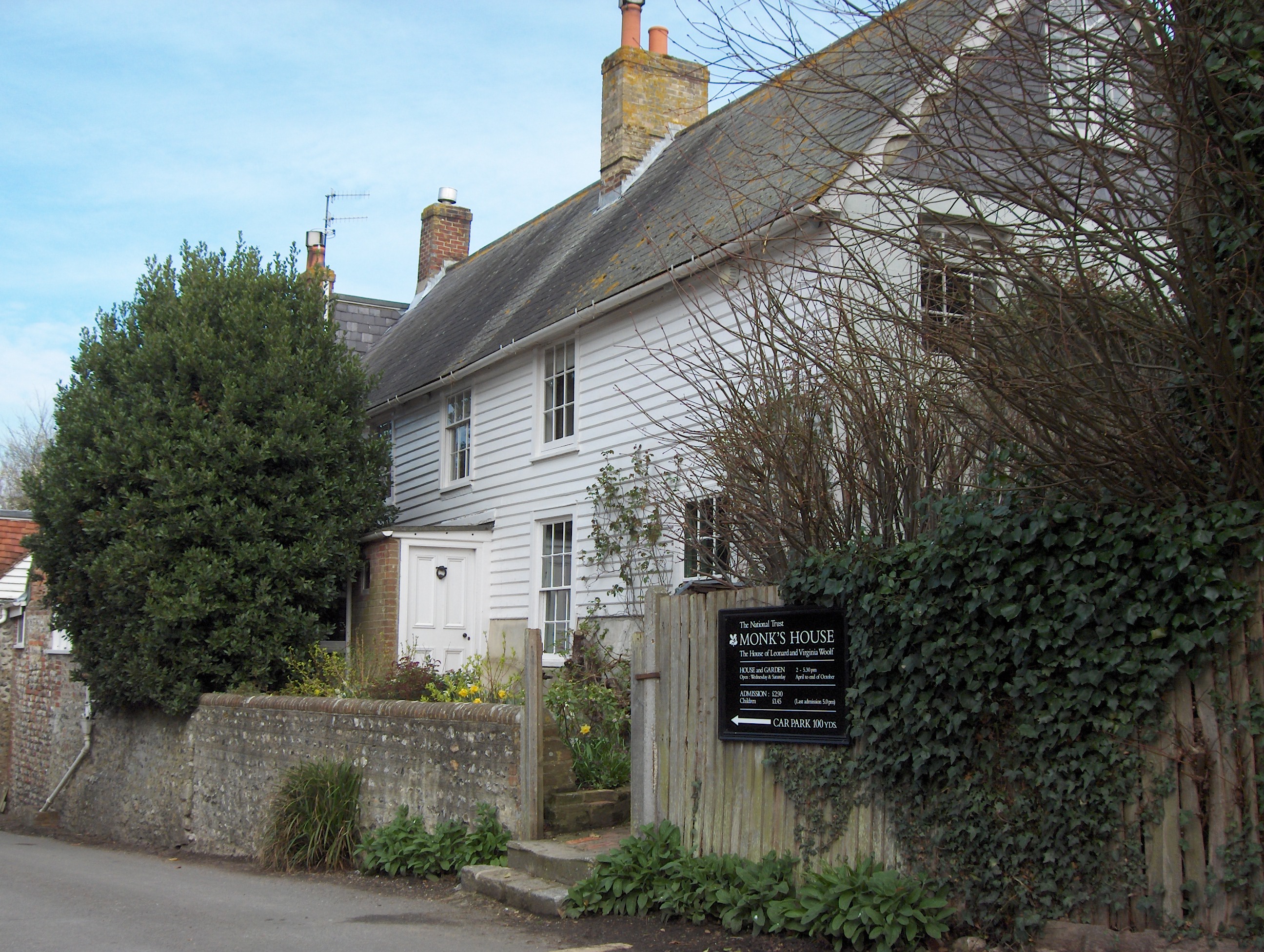Rodmell
Civil Parish in Sussex Lewes
England
Rodmell
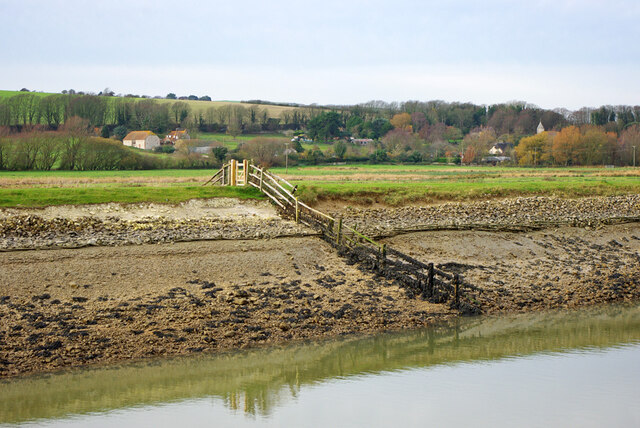
Rodmell is a small civil parish located in the county of Sussex, England. It is situated about 6 miles south of the historic town of Lewes and lies within the South Downs National Park. The parish covers an area of approximately 7.5 square kilometers and is home to a population of around 400 residents.
Rodmell is known for its picturesque countryside and charming rural atmosphere. The village itself is made up of a small cluster of houses and cottages, many of which date back to the 18th and 19th centuries. The parish is surrounded by rolling hills, lush farmland, and patches of woodland, offering residents and visitors ample opportunities for outdoor activities such as hiking and cycling.
One of the notable landmarks in Rodmell is the historic St. Peter's Church, which dates back to the 12th century. The church is known for its beautiful stained glass windows and peaceful atmosphere, attracting visitors from near and far.
Rodmell is also famous for being the former home of renowned British author Virginia Woolf. She and her husband Leonard Woolf lived in the village at their farmhouse, Monk's House, from 1919 until her death in 1941. Today, Monk's House is open to the public and serves as a museum dedicated to Virginia Woolf's life and work, attracting literary enthusiasts and history buffs.
Overall, Rodmell, Sussex, offers a tranquil and picturesque countryside setting, steeped in history and natural beauty, making it an appealing destination for those seeking a peaceful retreat.
If you have any feedback on the listing, please let us know in the comments section below.
Rodmell Images
Images are sourced within 2km of 50.833726/0.002365 or Grid Reference TQ4105. Thanks to Geograph Open Source API. All images are credited.

![Rodmell houses [1] These three cottages, Freshfields, Croft View Cottage and The Old Poor House are dated 1810 and were originally the parish poor-house. Constructed of flints with red brick dressings and quoins under a tile roof. Listed, grade II, with details at: <span class="nowrap"><a title="https://historicengland.org.uk/listing/the-list/list-entry/1273937" rel="nofollow ugc noopener" href="https://historicengland.org.uk/listing/the-list/list-entry/1273937">Link</a><img style="margin-left:2px;" alt="External link" title="External link - shift click to open in new window" src="https://s1.geograph.org.uk/img/external.png" width="10" height="10"/></span>
Rodmell is a small commuter village in East Sussex, some 7 miles northeast of Brighton and 2½ miles south of Lewes. There is evidence of occupation from the Iron Age onwards. In the village is Monks House, the home of the author Virginia Woolf for twenty-one years until her death in 1941.](https://s3.geograph.org.uk/geophotos/07/22/29/7222927_59e43a1b.jpg)
![Rodmell houses [2] Numbers 1 and 2 Style Cottages were built in the 18th century. Constructed of flint with red brick dressings and quoins, partly tile-hung, all under a tile roof. Listed, grade II, with details at: <span class="nowrap"><a title="https://historicengland.org.uk/listing/the-list/list-entry/1239036" rel="nofollow ugc noopener" href="https://historicengland.org.uk/listing/the-list/list-entry/1239036">Link</a><img style="margin-left:2px;" alt="External link" title="External link - shift click to open in new window" src="https://s1.geograph.org.uk/img/external.png" width="10" height="10"/></span>
Rodmell is a small commuter village in East Sussex some 7 miles northeast of Brighton and 2½ miles south of Lewes. There is evidence of occupation from the Iron Age onwards. In the village is Monks House, the home of the author Virginia Woolf for twenty-one years until her death in 1941.](https://s0.geograph.org.uk/geophotos/07/22/29/7222928_766459c0.jpg)
![Monks House [1] Monks House was the home of the writer Virginia Woolf and her husband, the political activist, journalist and editor Leonard Woolf. They bought the house in 1919 and lived there until their deaths in 1941 and 1969 respectively. They upgraded the house considerably. Built in the 18th century, the house is faced with weatherboarding on a stuccoed base under a slate roof. There is an extension on the left. The house is in the care of the National Trust. Listed, grade II, with details at: <span class="nowrap"><a title="https://historicengland.org.uk/listing/the-list/list-entry/1273935" rel="nofollow ugc noopener" href="https://historicengland.org.uk/listing/the-list/list-entry/1273935">Link</a><img style="margin-left:2px;" alt="External link" title="External link - shift click to open in new window" src="https://s1.geograph.org.uk/img/external.png" width="10" height="10"/></span>
Rodmell is a small commuter village in East Sussex some 7 miles northeast of Brighton and 2½ miles south of Lewes. There is evidence of occupation from the Iron Age onwards. In the village is Monks House, the home of the author Virginia Woolf for twenty-one years until her death in 1941.](https://s1.geograph.org.uk/geophotos/07/22/29/7222929_bb51975f.jpg)
![Monks House [2] Part of the garden.
Monks House was the home of the writer Virginia Woolf and her husband, the political activist, journalist and editor Leonard Woolf. They bought the house in 1919 and lived there until their deaths in 1941 and 1969 respectively. They upgraded the house considerably. Built in the 18th century, the house is faced with weatherboarding on a stuccoed base under a slate roof. There is an extension on the left. The house is in the care of the National Trust. Listed, grade II, with details at: <span class="nowrap"><a title="https://historicengland.org.uk/listing/the-list/list-entry/1273935" rel="nofollow ugc noopener" href="https://historicengland.org.uk/listing/the-list/list-entry/1273935">Link</a><img style="margin-left:2px;" alt="External link" title="External link - shift click to open in new window" src="https://s1.geograph.org.uk/img/external.png" width="10" height="10"/></span>
Rodmell is a small commuter village in East Sussex some 7 miles northeast of Brighton and 2½ miles south of Lewes. There is evidence of occupation from the Iron Age onwards. In the village is Monks House, the home of the author Virginia Woolf for twenty-one years until her death in 1941.](https://s1.geograph.org.uk/geophotos/07/22/29/7222933_f481f93d.jpg)
![Monks House [3] The garden with a view of the church.
Monks House was the home of the writer Virginia Woolf and her husband, the political activist, journalist and editor Leonard Woolf. They bought the house in 1919 and lived there until their deaths in 1941 and 1969 respectively. They upgraded the house considerably. Built in the 18th century, the house is faced with weatherboarding on a stuccoed base under a slate roof. There is an extension on the left. The house is in the care of the National Trust. Listed, grade II, with details at: <span class="nowrap"><a title="https://historicengland.org.uk/listing/the-list/list-entry/1273935" rel="nofollow ugc noopener" href="https://historicengland.org.uk/listing/the-list/list-entry/1273935">Link</a><img style="margin-left:2px;" alt="External link" title="External link - shift click to open in new window" src="https://s1.geograph.org.uk/img/external.png" width="10" height="10"/></span>
Rodmell is a small commuter village in East Sussex some 7 miles northeast of Brighton and 2½ miles south of Lewes. There is evidence of occupation from the Iron Age onwards. In the village is Monks House, the home of the author Virginia Woolf for twenty-one years until her death in 1941.](https://s3.geograph.org.uk/geophotos/07/22/29/7222935_8a3fa0ef.jpg)
![Monks House [4] A bust of Leonard Woolf in the garden.
Monks House was the home of the writer Virginia Woolf and her husband, the political activist, journalist and editor Leonard Woolf. They bought the house in 1919 and lived there until their deaths in 1941 and 1969 respectively. They upgraded the house considerably. Built in the 18th century, the house is faced with weatherboarding on a stuccoed base under a slate roof. There is an extension on the left. The house is in the care of the National Trust. Listed, grade II, with details at: <span class="nowrap"><a title="https://historicengland.org.uk/listing/the-list/list-entry/1273935" rel="nofollow ugc noopener" href="https://historicengland.org.uk/listing/the-list/list-entry/1273935">Link</a><img style="margin-left:2px;" alt="External link" title="External link - shift click to open in new window" src="https://s1.geograph.org.uk/img/external.png" width="10" height="10"/></span>
Rodmell is a small commuter village in East Sussex some 7 miles northeast of Brighton and 2½ miles south of Lewes. There is evidence of occupation from the Iron Age onwards. In the village is Monks House, the home of the author Virginia Woolf for twenty-one years until her death in 1941.](https://s1.geograph.org.uk/geophotos/07/22/29/7222937_73a379b1.jpg)
![Monks House [5] A bust of Virginia Woolf in the garden.
Monks House was the home of the writer Virginia Woolf and her husband, the political activist, journalist and editor Leonard Woolf. They bought the house in 1919 and lived there until their deaths in 1941 and 1969 respectively. They upgraded the house considerably. Built in the 18th century, the house is faced with weatherboarding on a stuccoed base under a slate roof. There is an extension on the left. The house is in the care of the National Trust. Listed, grade II, with details at: <span class="nowrap"><a title="https://historicengland.org.uk/listing/the-list/list-entry/1273935" rel="nofollow ugc noopener" href="https://historicengland.org.uk/listing/the-list/list-entry/1273935">Link</a><img style="margin-left:2px;" alt="External link" title="External link - shift click to open in new window" src="https://s1.geograph.org.uk/img/external.png" width="10" height="10"/></span>
Rodmell is a small commuter village in East Sussex some 7 miles northeast of Brighton and 2½ miles south of Lewes. There is evidence of occupation from the Iron Age onwards. In the village is Monks House, the home of the author Virginia Woolf for twenty-one years until her death in 1941.](https://s3.geograph.org.uk/geophotos/07/22/29/7222939_8ed0f949.jpg)
![Monks House [6] The house seen from the garden.
Monks House was the home of the writer Virginia Woolf and her husband, the political activist, journalist and editor Leonard Woolf. They bought the house in 1919 and lived there until their deaths in 1941 and 1969 respectively. They upgraded the house considerably. Built in the 18th century, the house is faced with weatherboarding on a stuccoed base under a slate roof. There is an extension on the left. The house is in the care of the National Trust. Listed, grade II, with details at: <span class="nowrap"><a title="https://historicengland.org.uk/listing/the-list/list-entry/1273935" rel="nofollow ugc noopener" href="https://historicengland.org.uk/listing/the-list/list-entry/1273935">Link</a><img style="margin-left:2px;" alt="External link" title="External link - shift click to open in new window" src="https://s1.geograph.org.uk/img/external.png" width="10" height="10"/></span>
Rodmell is a small commuter village in East Sussex some 7 miles northeast of Brighton and 2½ miles south of Lewes. There is evidence of occupation from the Iron Age onwards. In the village is Monks House, the home of the author Virginia Woolf for twenty-one years until her death in 1941.](https://s1.geograph.org.uk/geophotos/07/22/29/7222941_f33dd4b3.jpg)
![Rodmell features [1] This path leads to the church.
Rodmell is a small commuter village in East Sussex some 7 miles northeast of Brighton and 2½ miles south of Lewes. There is evidence of occupation from the Iron Age onwards. In the village is Monks House, the home of the author Virginia Woolf for twenty-one years until her death in 1941.](https://s0.geograph.org.uk/geophotos/07/22/29/7222944_7c0886b6.jpg)
![Parish church [1] This fine lychgate leads to the church.
The Anglican parish church of St Peter has a chancel, nave and south chapel from the early C12. The south aisle, tower and south annexe are late 12th century. The church was restored in 1858 and in 1870. Constructed of flint with freestone dressings under a tile roof. Listed, grade I, with details at: <span class="nowrap"><a title="https://historicengland.org.uk/listing/the-list/list-entry/1238975" rel="nofollow ugc noopener" href="https://historicengland.org.uk/listing/the-list/list-entry/1238975">Link</a><img style="margin-left:2px;" alt="External link" title="External link - shift click to open in new window" src="https://s1.geograph.org.uk/img/external.png" width="10" height="10"/></span>
Rodmell is a small commuter village in East Sussex, some 7 miles northeast of Brighton and 2½ miles south of Lewes. There is evidence of occupation from the Iron Age onwards. In the village is Monks House, the home of the author Virginia Woolf for twenty-one years until her death in 1941.](https://s1.geograph.org.uk/geophotos/07/22/29/7222953_e2a00a0c.jpg)
![Parish church [2] The Anglican parish church of St Peter has a chancel, nave and south chapel from the early C12. The south aisle, tower and south annexe are late 12th century. The church was restored in 1858 and in 1870. Constructed of flint with freestone dressings under a tile roof. Listed, grade I, with details at: <span class="nowrap"><a title="https://historicengland.org.uk/listing/the-list/list-entry/1238975" rel="nofollow ugc noopener" href="https://historicengland.org.uk/listing/the-list/list-entry/1238975">Link</a><img style="margin-left:2px;" alt="External link" title="External link - shift click to open in new window" src="https://s1.geograph.org.uk/img/external.png" width="10" height="10"/></span>
Rodmell is a small commuter village in East Sussex, some 7 miles northeast of Brighton and 2½ miles south of Lewes. There is evidence of occupation from the Iron Age onwards. In the village is Monks House, the home of the author Virginia Woolf for twenty-one years until her death in 1941.](https://s0.geograph.org.uk/geophotos/07/22/29/7222956_80d9a39e.jpg)
![Parish church [3] The nave and fine chancel arch.
The Anglican parish church of St Peter has a chancel, nave and south chapel from the early C12. The south aisle, tower and south annexe are late 12th century. The church was restored in 1858 and in 1870. Constructed of flint with freestone dressings under a tile roof. Listed, grade I, with details at: <span class="nowrap"><a title="https://historicengland.org.uk/listing/the-list/list-entry/1238975" rel="nofollow ugc noopener" href="https://historicengland.org.uk/listing/the-list/list-entry/1238975">Link</a><img style="margin-left:2px;" alt="External link" title="External link - shift click to open in new window" src="https://s1.geograph.org.uk/img/external.png" width="10" height="10"/></span>
Rodmell is a small commuter village in East Sussex, some 7 miles northeast of Brighton and 2½ miles south of Lewes. There is evidence of occupation from the Iron Age onwards. In the village is Monks House, the home of the author Virginia Woolf for twenty-one years until her death in 1941.](https://s2.geograph.org.uk/geophotos/07/22/29/7222958_f51f561c.jpg)
![Parish church [4] The south chapel window.
The Anglican parish church of St Peter has a chancel, nave and south chapel from the early C12. The south aisle, tower and south annexe are late 12th century. The church was restored in 1858 and in 1870. Constructed of flint with freestone dressings under a tile roof. Listed, grade I, with details at: <span class="nowrap"><a title="https://historicengland.org.uk/listing/the-list/list-entry/1238975" rel="nofollow ugc noopener" href="https://historicengland.org.uk/listing/the-list/list-entry/1238975">Link</a><img style="margin-left:2px;" alt="External link" title="External link - shift click to open in new window" src="https://s1.geograph.org.uk/img/external.png" width="10" height="10"/></span>
Rodmell is a small commuter village in East Sussex, some 7 miles northeast of Brighton and 2½ miles south of Lewes. There is evidence of occupation from the Iron Age onwards. In the village is Monks House, the home of the author Virginia Woolf for twenty-one years until her death in 1941.](https://s0.geograph.org.uk/geophotos/07/22/29/7222960_2986aed2.jpg)
Rodmell is located at Grid Ref: TQ4105 (Lat: 50.833726, Lng: 0.002365)
Administrative County: East Sussex
District: Lewes
Police Authority: Sussex
What 3 Words
///messaging.contrived.scrapping. Near Lewes, East Sussex
Related Wikis
Rodmell
Rodmell is a small village and civil parish in the Lewes District of East Sussex, England. It is located three miles (4.8 km) south-east of Lewes, on the...
Monk's House
Monk's House is a 16th-century weatherboarded cottage in the village of Rodmell, three miles (4.8 km) south of Lewes, East Sussex, England. The writer...
St Peter's Church, Rodmell
St Peter's Church is the parish church of Rodmell, East Sussex, England, and dates from the 12th century. It is a Grade I listed building and is among...
Southease
Southease is a small village and civil parish in East Sussex, in South East England between the A26 road and the C7 road from Lewes to Newhaven. The village...
Nearby Amenities
Located within 500m of 50.833726,0.002365Have you been to Rodmell?
Leave your review of Rodmell below (or comments, questions and feedback).
